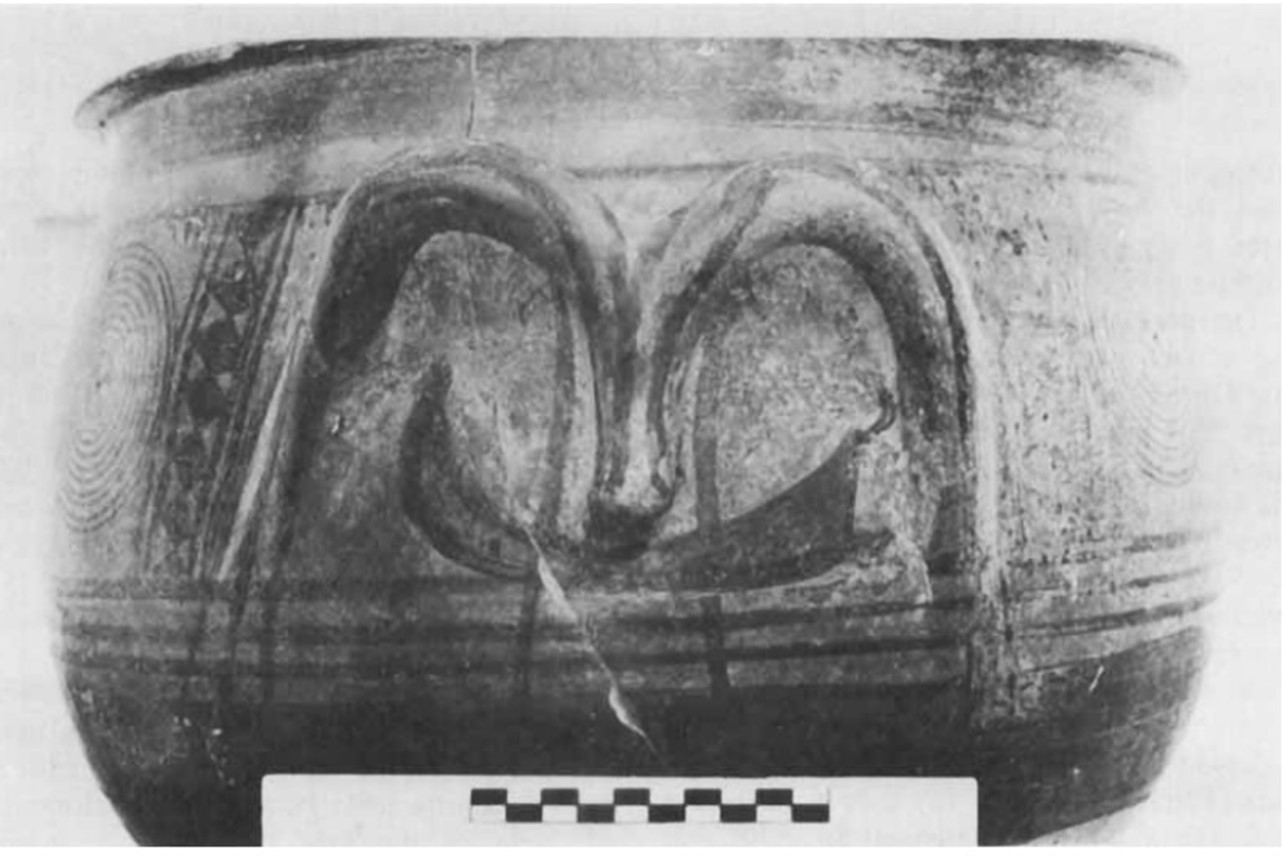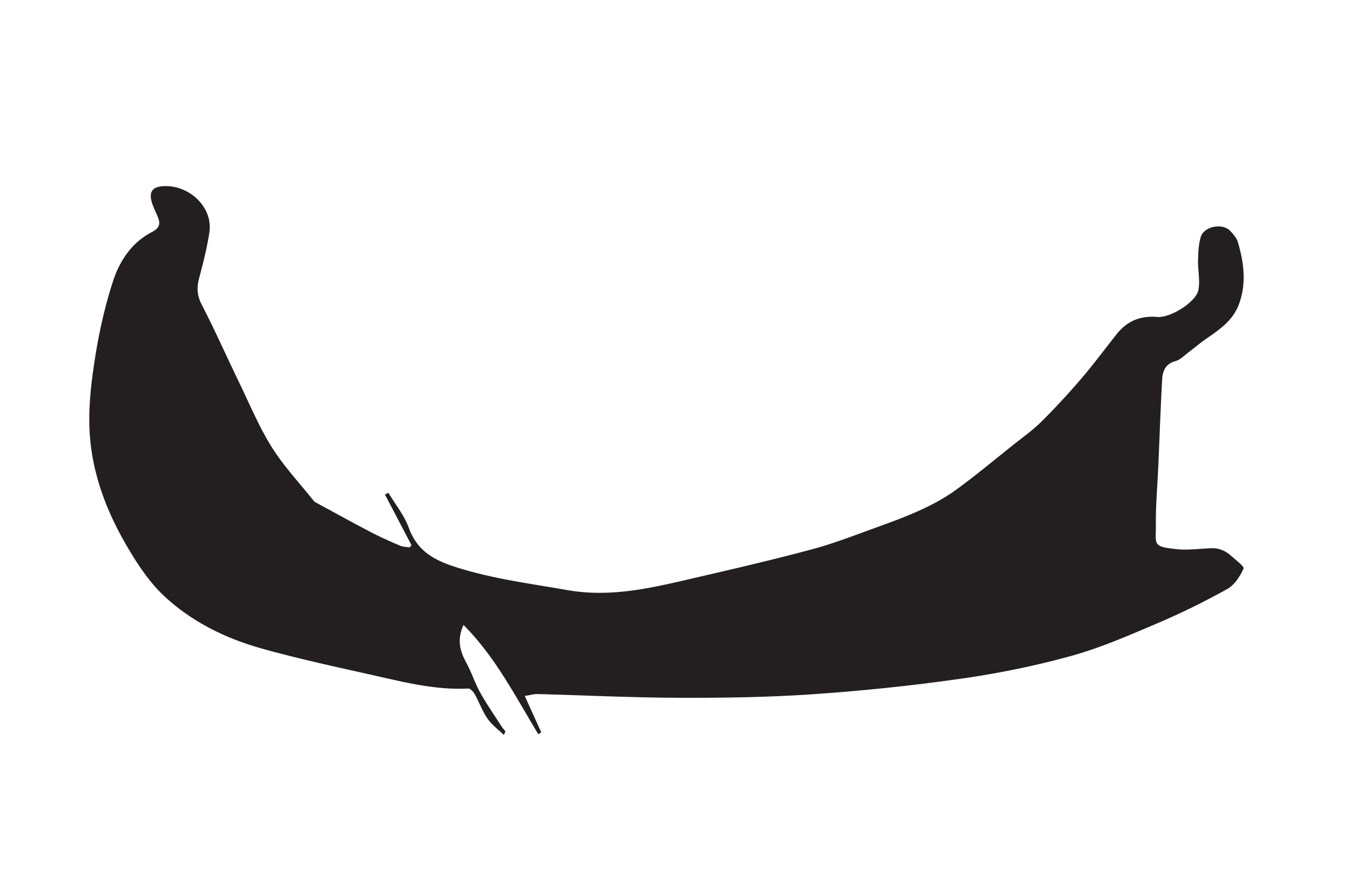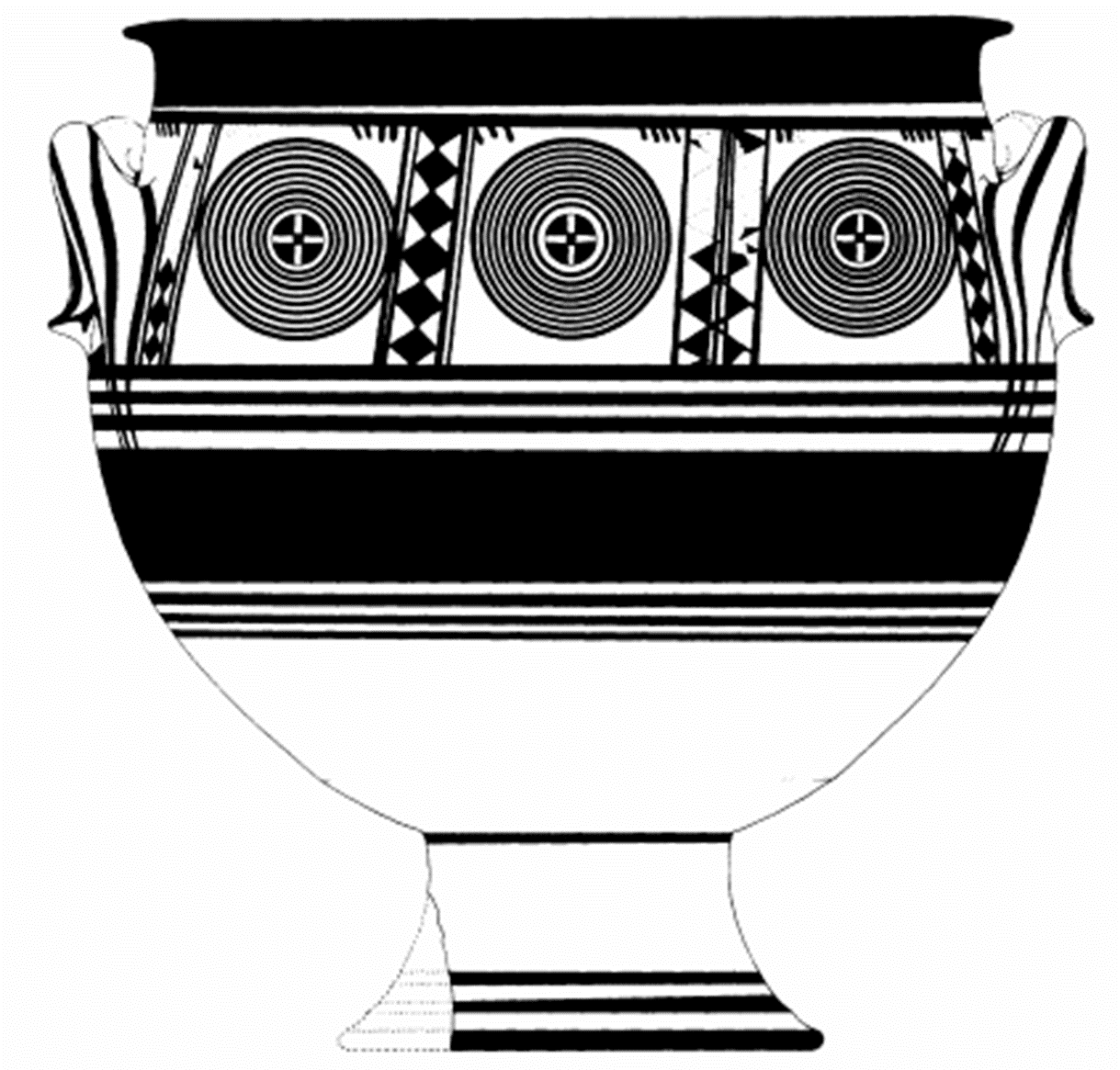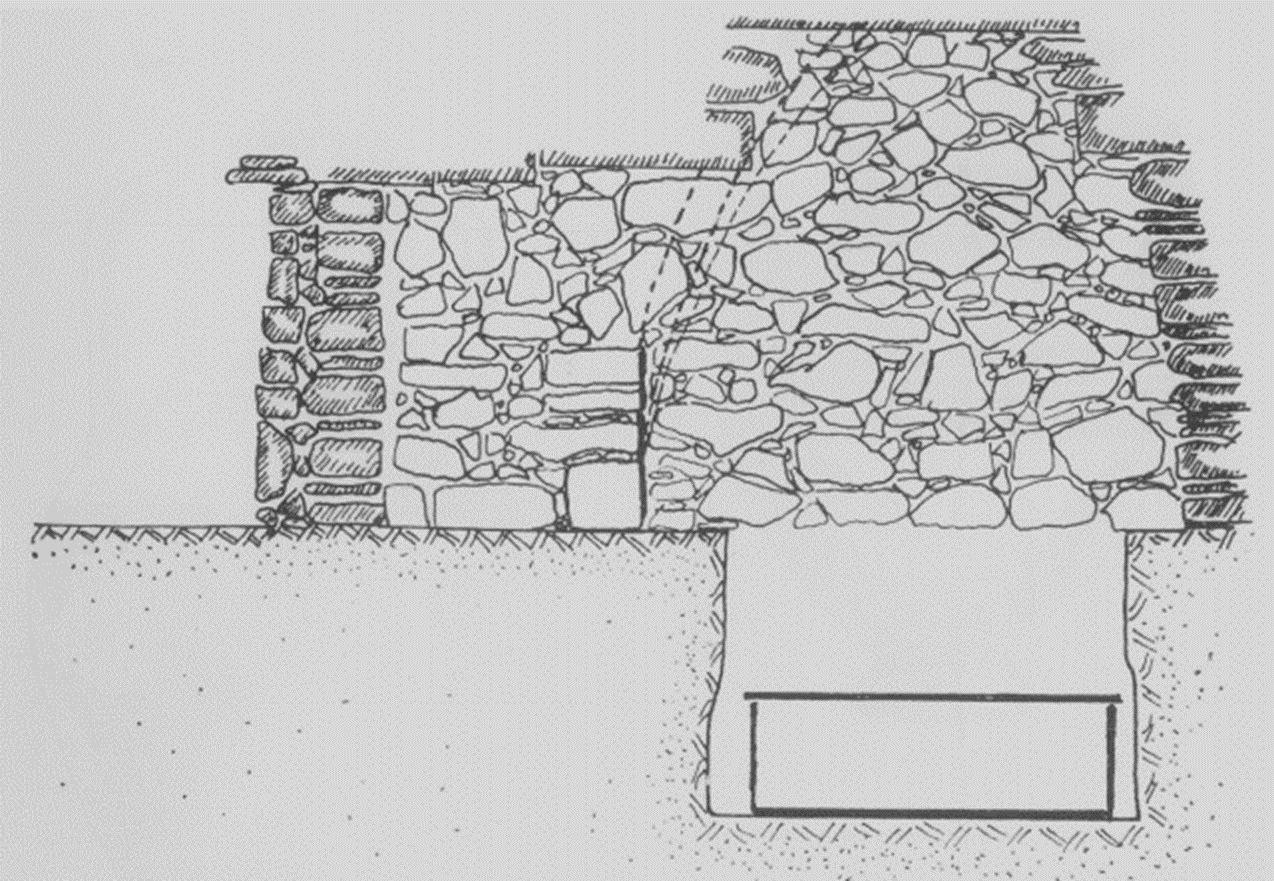The ship faces right, with a low flat hull, a high curving stern, and a vertical stempost that appears well integrated into the rest of the hull. There is a substantial bow projection and a small incurving horn device at the end of the stempost. Wedde assigns this ship to group 4, characterized by a massive triangular bow morphology. There appears to be no protective screen to encase the putative forecastle.
Single-levelled galley
A113
950-900 B.C. (LPG)
Dirmil chamber tomb, Halicarnassus peninsula, Turkey
H: 46.9 cm; diameter (mouth): 40.5 cm
Krater with deep body, high flaring foot, bevelled lip, and double handles. Orange-red fabric, very light buff slip
Bodrum Museum 42
Basch 1987: 189, fig. 400; Bass 1963: 357-9 (tomb); Van Doorninck 1982; Wedde 2006: 261, fig. 10
The tomb in which the krater was found consists of a roughly rectangular chamber entered by a short dromos facing south. A rectangular pit cut into the rock floor contained a terracotta sarcophagus which housed a tall male ca. 65 years old placed in the dorsal position. Near his feet a separate pit contained the contracted remains of a woman (ca. 30-35 years old). Burial gifts included a bronze fibula, two skyphoi, one krater, two amphorae and two oinochoe. Except for a skyphos found inside the male's pit, the rest of the vases were placed in the tomb chamber itself. The Dirmil krater finds comparative material in terms of shape and decoration with vases from Euboea and Thessaly.1 The reserved cross as a filling to the circles confirms a LPG date. The ship representation is centered below the krater's double handle. It crosses two vertical banners flanking the handle's central member which were painted before the ship. These are part of the decorative scheme of the handle and thus bear no relation to the image. The painter has outlined the ship's silhouette first and then filled it in. Doorninck remarks that the artist made an erasure, where he removed a section of the narrow horizontal band that acted as the base line for the ship. It extends from the inside edge of the right vertical banner that flanks the handle's central member, to just short of the handle's end. This created a slight depression indicated on the drawing, and was probably a correction to provide adequate definition of the underside of the bow and the bow projection.
1. Lemos 2002: 51. Some scholars have also highlighted possible Attic connections (Bass, 1963: 361; Coldstream, 1968: 264 and 339). For a close parallel from Thessaly at Marmariani, see Bass 1963: 359.
The depiction is extremely minimalist, perhaps even more so than the Fortetsa ships. It was obviously placed as a convenient shape to fill the odd space under the double handle, a solution which was similarly adopted on a LG I depiction of the Dipylon group. The curve of the sheer becomes more pronounced at the center, giving the impression of a markedly low waist. This is not structurally significant, but was rather the result of the length of the double handle's central member. The painter obviously made this adaptation to fit the ship's silhouette within the narrow space. The possibility that this krater is Euboean has potentially interesting and important implications as it would add a third approach to bow morphology associated to Euboean vase painters if Wedde's reading is correct (Popham 1987: 359, n.7; Calligas 1990: 78; Wedde 2006: 261).
Basch, L. 1987. Le musée imaginaire de la marine antique. Athens: Institut Hellénique pour la preservation de la tradition nautique.
Bass, G.F. 1963. “Mycenaean and Protogeometric Tombs in the Halicarnassus Peninsula,” AJA 64.4: 353-361.
Van Doorninck, F. H. 1982. “Protogeometric Longships and the Introduction of the Ram,” IJNA 11.4: 277–286.
Wedde, M. 2006. “Pictorial Evidence for Partial System Survival in the Greek Bronze Age to Iron Age Transition,” in E. Rystedt and B. Wells (eds.) Pictorial Pursuits: Eigurative Painting on Mycenaean and Geometric Pottery. Paper from Two International Round-Table Conferences on Mycenaean and Geometric Pottery at the Swedish Institute at Athens in 1999 and 2001, Stockholm: Svenska Instituted I Athen, pp. 255-269.










